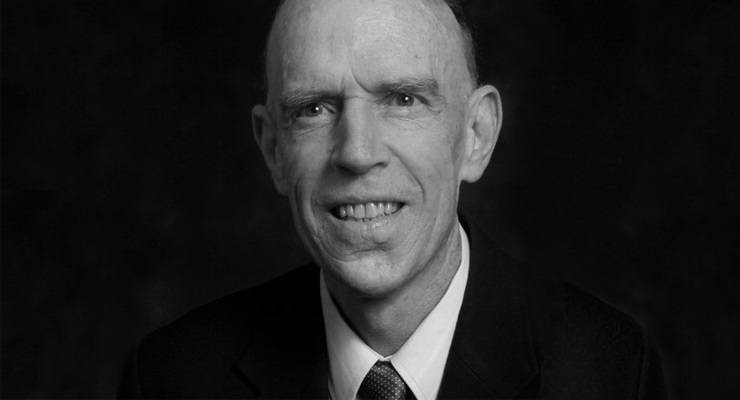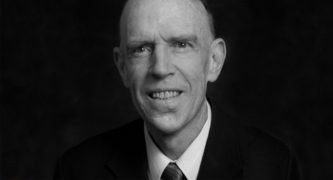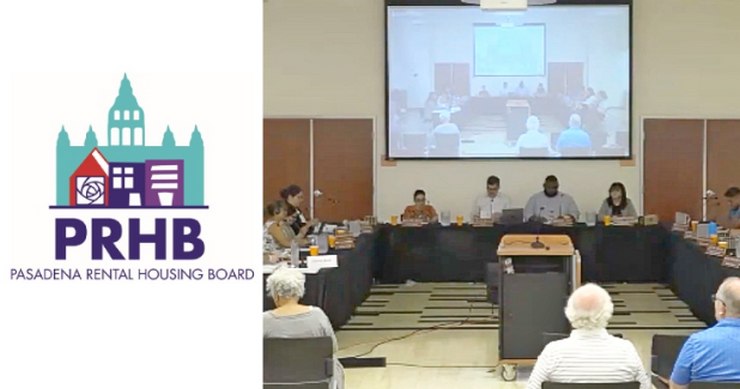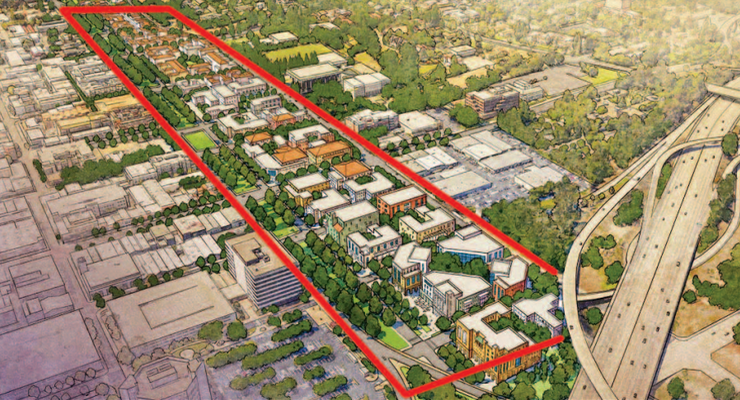
Wilfred D. (Bill) Iwan, professor of civil engineering, emeritus, and a Caltech alumnus, passed away on October 29. He was 85 years old.
Iwan grew up in a working-class family in Altadena. He had an early passion for music, but his father, who had lived through tough times during the Great Depression and was concerned that music might not make for a solid career, encouraged Iwan to pursue engineering instead.
His musical background did help launch his engineering education, though: at that time, in the 1950s, every candidate for admission to Caltech was interviewed by a faculty member. In a 2007 interview, Iwan recalled being “scared to death” when he went in for his interview; he immediately relaxed when he discovered he knew his interviewer from his church choir. Iwan went on to receive his bachelor’s, master’s, and doctorate degrees from Caltech in 1957, 1958, and 1961, respectively.
Iwan had not intended to pursue a career in academia. However, in 1961, he was offered an opportunity to teach at the Air Force Academy in Colorado Springs with Colonel Archie Higdon (Iwan was a member of the Air Force Reserve Officers’ Training Corps at Caltech). Although he was initially skeptical, Caltech earthquake engineering pioneers Don Hudson (BS ’38, MS ’39, PhD ’42) and George Housner (MS ’34, PHD ’41) assured Iwan that Higdon was a leading expert on statistics and dynamics, and he accepted the job offer.
At the time, Iwan was a second lieutenant, outranked by the majors and colonels whom he taught. “I managed the shoeshine box for everybody; that was the level I was at normally,” he recalled in the 2007 interview. In the classroom, though, he was king. “I enjoyed teaching and it was something I seemed to be fairly adapted towards, and so I decided, well, I would like to continue a teaching career—and research.”
The Air Force offered Iwan two back-to-back, 10-year appointments at the Air Force Academy. Instead, Iwan accepted an offer from Caltech in 1964, and remained at the Institute for the rest of his career.
Iwan’s research focused on fundamental areas of mechanics, including work to understand and characterize strong earthquake ground motion and the analysis and monitoring of the response of structural systems subjected to extreme events and loads. In the 1970s and ’80s, he was a core member of an engineering seismology dream team at Caltech that also included Housner and Hudson as well as Ron Scott, who studied soil mechanics; and Paul Jennings (MS ’60, PhD ’63), professor of civil engineering and applied mechanics, emeritus, who worked in structural mechanics.
Iwan’s research achievements included the development of methods to represent complex nonlinear structures with simpler linear systems.
“Think of a coat hanger,” Jennings says. “You bend it a little, and it springs back in an elastic response. Bend it a lot, and it goes plastic and kinks. Same thing happens with the steel girders supporting a building. Earthquakes can apply so much force on them that their response is no longer proportional to the amount that they deform. At that point, the system becomes nonlinear and is a much more difficult system to analyze.”
Specifically, Iwan worked on a method called equivalent linearization: that is, if the nonlinearities in a system caused by stress are not too big, the system can be treated as a simple linear system, just one with different characteristics than it had before the stress was applied. “In essence, you can create a surrogate linear system that allows you to do reasonably expeditious calculations about the maximum deformation of buildings,” explains former student Pol Spanos (MS ’74, PhD ’76), now Lewis B. Ryon Professor in Mechanical & Civil Engineering at Rice University.
“It allows you to stretch the tools you already have to describe these phenomena, which you otherwise couldn’t,” Jennings adds.
Iwan also worked on the development of practical methods for earthquake-resistant design and the development of simplified methods for the analysis of seismic isolation systems for critical equipment. He also was involved in the development of public policy regarding disasters, proposing an earthquake early warning system for urban regions in 1979.
His former graduate students describe Iwan as a natural-born mentor. “His smile is what I always remember. You couldn’t walk into Bill’s office without getting a huge smile. And he always asked how you were doing,” says former student Richard Miller (PhD ’76), who recently retired as the founding president of Olin College of Engineering in Massachusetts and is now the Jerome C. Hunsaker Visiting Professor of Aerospace Systems at MIT. “He was born to be an applied mathematician—you couldn’t talk to him for more than five minutes without going to the blackboard to work something out.”
Colleagues also remember being impressed by Iwan’s deep and quiet faith. “It was very personal and he was very discreet,” says former student Nicholas Jones, (MS, PhD ’86), now executive vice president and provost of Penn State University. “Everybody knew of his faith, but he was also somebody who was very respectful of other people’s beliefs or nonbeliefs, so it never got into that type of conversation unless he was invited there. He didn’t need to talk about it because he lived it so strongly; observing that told you about what you needed to know. His actions really spoke louder than any words could.”
In his 2007 interview, Iwan noted that early in his career, “…I was looking for some sort of a guiding or driving principle for my life, and there was a Bible verse that I found. It was written by the Apostle Paul, and it was from Colossians, chapter three, verse 23. And it said, ‘Whatever you do, do it heartily as unto the Lord, and not unto men.’ I took that verse and made it my life’s reference point, and that’s really what has guided me ever since….”
Miller recalls that Iwan often had a Bible sitting on his desk. “That doesn’t happen very often at Caltech,” Miller says. “He never mentioned anything about it. I think it was there because he was actually reading it occasionally, and that’s just where it would land.” Spanos remembers long discussions with Iwan about the etymology of words in the Bible of Greek origin.
An understated but persistent strength characterized Iwan’s career, say colleagues, who remember a man who did not vie for awards or a spotlight, but rather kept himself focused on getting the job done. “He was very humble and driven by inquiry and a thirst for discovery,” Jones says. “He was an innovator.”
“He was not a person who was artificial in any way,” says Miller. “Not a politician. He didn’t try to position himself for recognition. Academia isn’t about finding answers to problems we’ve already solved. It’s expeditionary learning. It takes a playful, optimistic attitude to make that work out, and Bill had that,” Miller says.
Miller worked with Jones to invite Iwan’s former students back to campus for his retirement party in 2005. Those students, he says, were successful in an unusually wide array of career paths—including as presidents of universities, the CEO of a hospital, and as engineers in the financial sector and at Fortune 500 tech companies.
Jones credits that success to Iwan and his ability to simplify and solve especially complicated problems by deconstructing them into their component parts, modeling the mechanics of the separate pieces, and then reassembling the modeled pieces into a complex whole that provides a big-picture perspective—a methodology he trained his students to use as well.
Jones notes that this approach has helped him hundreds of times through his career, with everything from engineering problems to his current task of guiding Penn State through the COVID-19 pandemic. “The pandemic has made structural dynamics problems look like a cakewalk,” he says.
That ability to break down complex systems also made Iwan a strong communicator of technical topics. “Bill was an extremely effective technical writer,” Spanos says. “I owe my own style of technical writing to Bill, and it has helped me in my duties as an editor of archival journals. He had this disarming simplicity in talking about all kinds of things.”
Iwan also made a point of listening to his students, rather than simply doling out advice. Miller recalls that when he was first approached by the F. W. Olin Foundation in 1998 about the possibility of starting a new college from scratch, many of his confidantes urged him not to leap into the unknown. One colleague went so far as to write a five-page, single-spaced letter telling him why it was a terrible idea.
“But then I talked to Bill, and he was not impressed with everyone else’s advice,” Miller says. “He said, ‘You need to look inward. Why are you so interested in this?’ It’s the same compass that always drove him. He believed that if you followed that compass, you’d succeed, eventually. He was 100 percent supportive of the whole thing. And when I made the decision to do it, I knew that if something went wrong, Bill would still be there for me.”
Iwan battled cancer for much of the later part of his life, to the point that several of the attendees of the 2005 retirement party worried that it would also be a farewell party. “That was the last time that I cried even privately. I was so moved,” Spanos says. “At that time, we really thought that we were losing him. But he fought and lived to be 85 years old.”
Even as he endured both cancer and the effects of the treatments that saved his life, Iwan never stopped working.
“I think when so many other people would’ve thrown in the towel, he just went at it head on, thoughtfully, analytically, and very bravely,” Jones says. “He was able to extend in amazing ways a life that could’ve ended many years earlier. Even those of us who were his former students and knew him pretty well were just awestruck and inspired by the way in which he took on this personal challenge and wrestled it to the ground. Not alone, of course, accompanied by his wife and family, and also his deep faith.”
Iwan served as the executive officer for Civil Engineering and Applied Mechanics in the Division of Engineering and Applied Science from 1980–86, and became professor emeritus in 2004. He was elected to the National Academy of Engineering in 1999, and was a Distinguished Member and Fellow of the American Society of Civil Engineers (ASCE), which awarded him the Nathan M. Newmark Medal (1997), the William H. Wisely Award (2006), and the Theodore von Kármán Medal (2013). In 2002, the California Earthquake Safety Foundation awarded him the Alfred E. Alquist Medal “for his lifetime of service to the profession of structural engineering and its application to the safety of the people of California and the world.”
He is survived is survived by his wife of 63 years, Joan Alta Iwan; his three sons William, Robert and Stephen; seven grandchildren; and six great grandchildren.
An abbreviated version of this obituary was originally published on November 2, 2020.














 1 comment
1 comment


